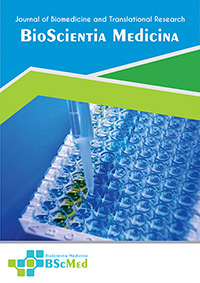Main Article Content
Abstract
Background: Chronic lymphocytic leukemia (CLL) is a common hematologic malignancy in adults, frequently discovered incidentally through routine blood tests due to its often nonspecific clinical presentation. In resource-limited settings, fundamental laboratory investigations are crucial for initiating the diagnostic pathway. This report illustrates the critical diagnostic value of the complete blood count and peripheral blood smear in identifying CLL in a patient presenting with vague constitutional symptoms.
Case presentation: A 43-year-old female with a history of type 2 diabetes mellitus presented to a rural hospital with a one-month history of debilitating fatigue, intermittent fever, and loss of appetite. Physical and radiological examinations were unremarkable. However, initial hematological analysis revealed marked leukocytosis (77,910/μL), mild anemia, and thrombocytopenia (54,000/μL). A peripheral blood smear was pivotal, showing an absolute lymphocytosis of 90% with mature-appearing lymphocytes, pleomorphism, and characteristic smudge cells. Following referral, definitive diagnosis was established through flow cytometry, which confirmed a clonal B-cell population (CD19+, CD5+, CD23+, dim CD20+). Bone marrow examination showed extensive infiltration, and molecular studies revealed an unmutated IGHV gene status, placing the patient in a high-risk prognostic category.
Conclusion: This case underscores that even in the absence of advanced diagnostic facilities, a meticulous evaluation of the peripheral blood smear is a powerful and essential tool for unmasking serious underlying hematologic malignancies like CLL. It enables early suspicion, appropriate patient referral, and timely initiation of management, thereby significantly impacting patient outcomes.
Keywords
Article Details
As our aim is to disseminate original research article, hence the publishing right is a necessary one. The publishing right is needed in order to reach the agreement between the author and publisher. As the journal is fully open access, the authors will sign an exclusive license agreement.
The authors have the right to:
- Share their article in the same ways permitted to third parties under the relevant user license.
- Retain copyright, patent, trademark and other intellectual property rights including research data.
- Proper attribution and credit for the published work.
For the open access article, the publisher is granted to the following right.
- The non-exclusive right to publish the article and grant right to others.
- For the published article, the publisher applied for the Creative Commons Attribution-NonCommercial-ShareAlike 4.0 International License.





